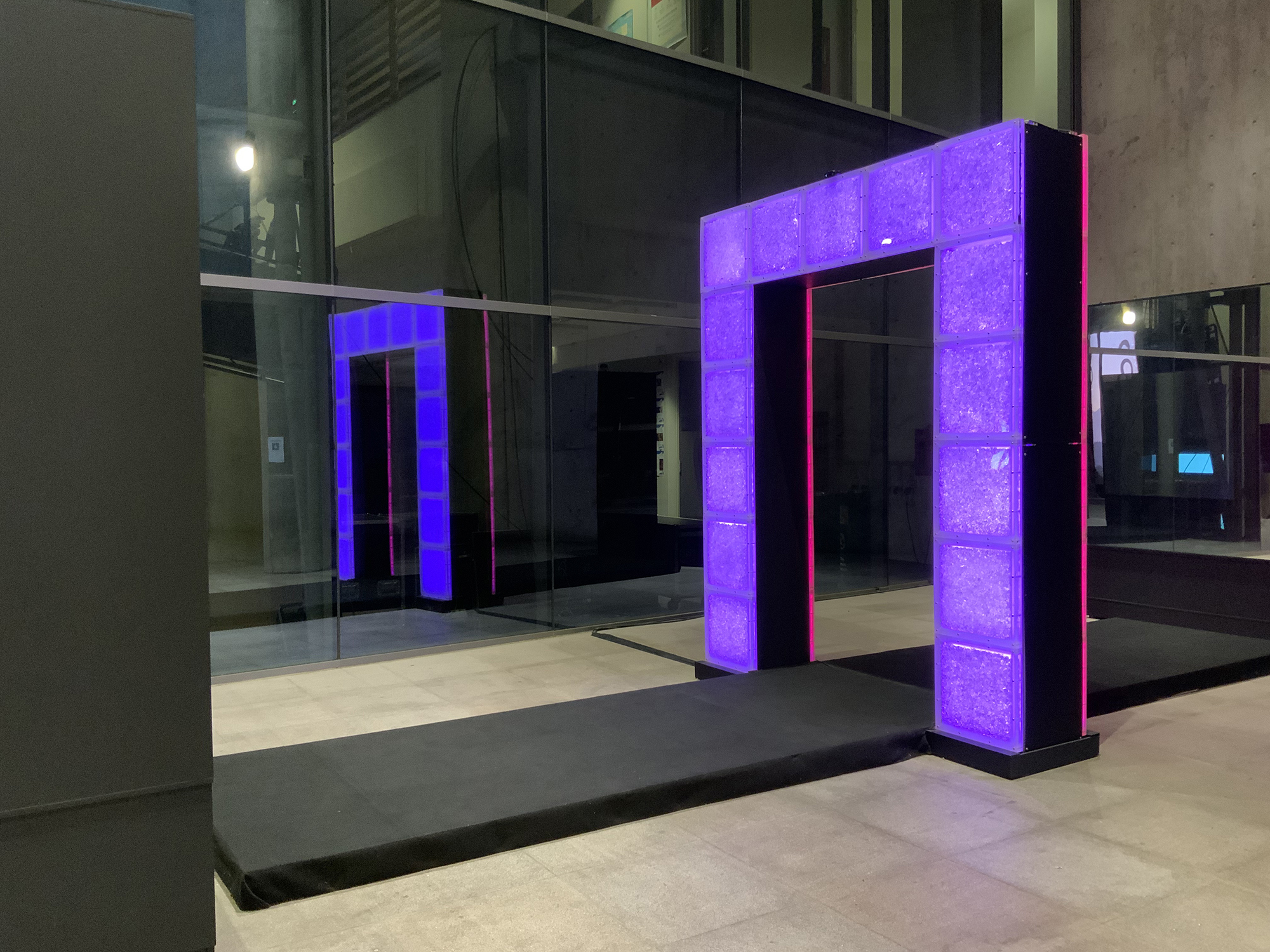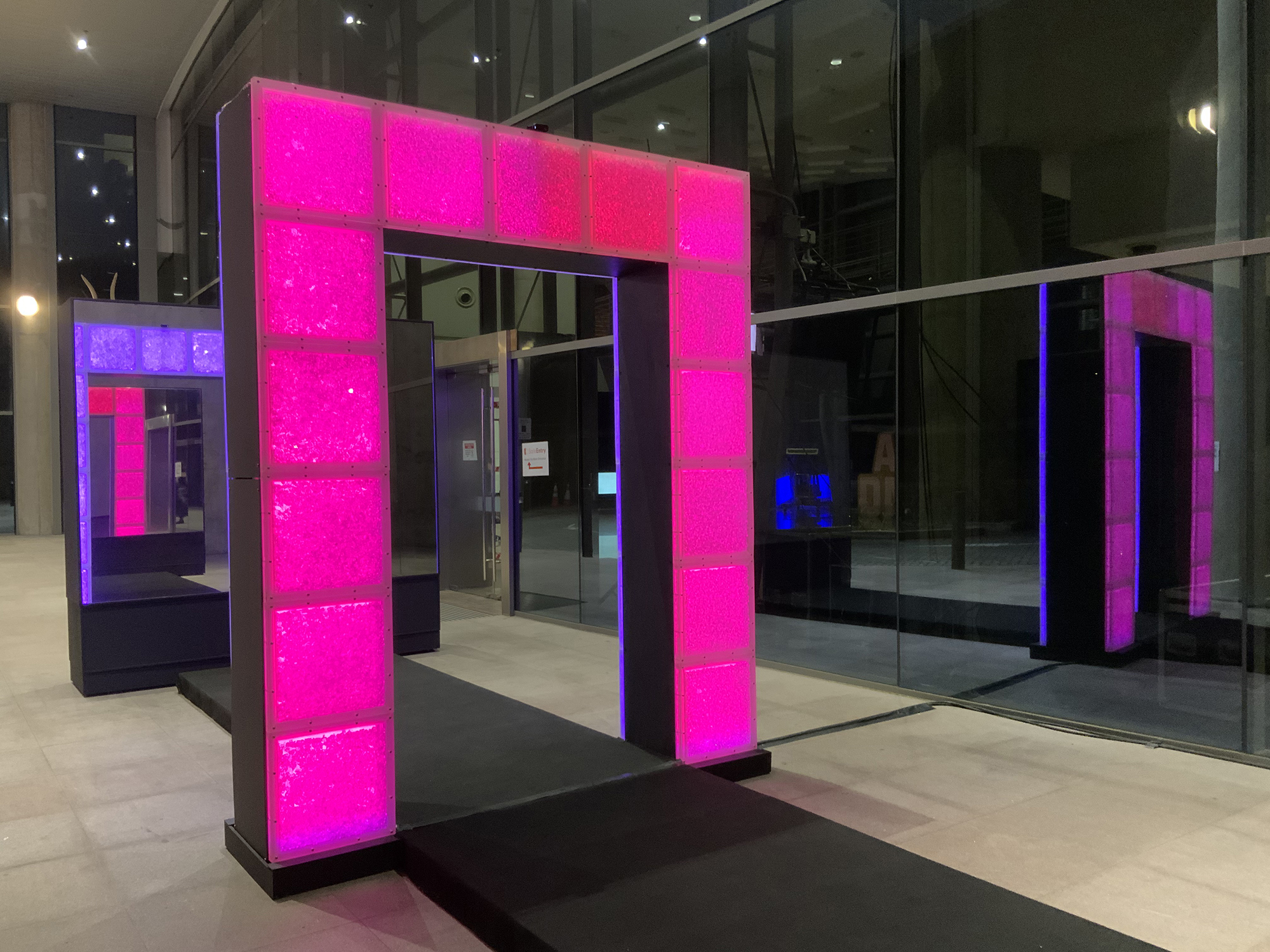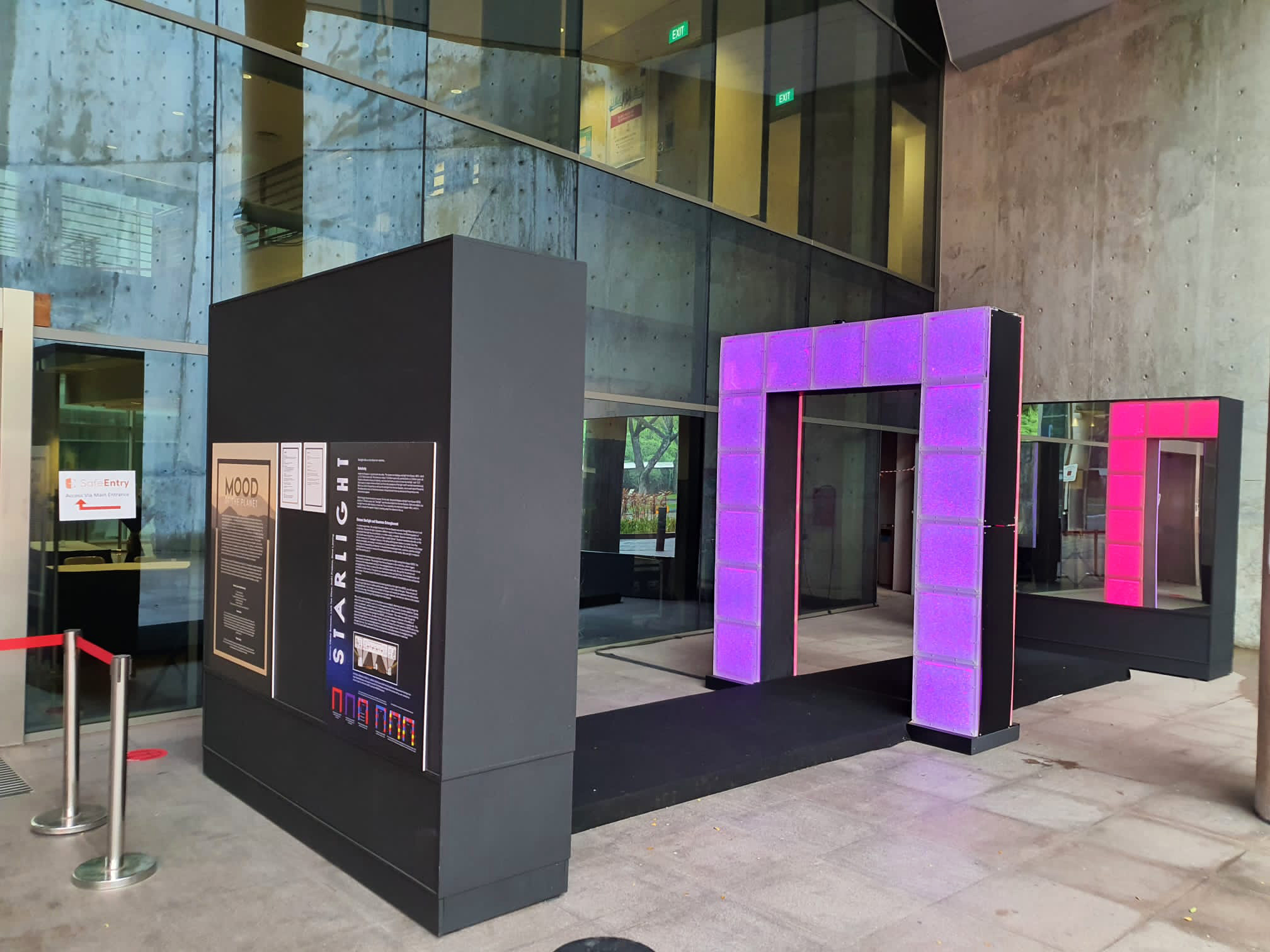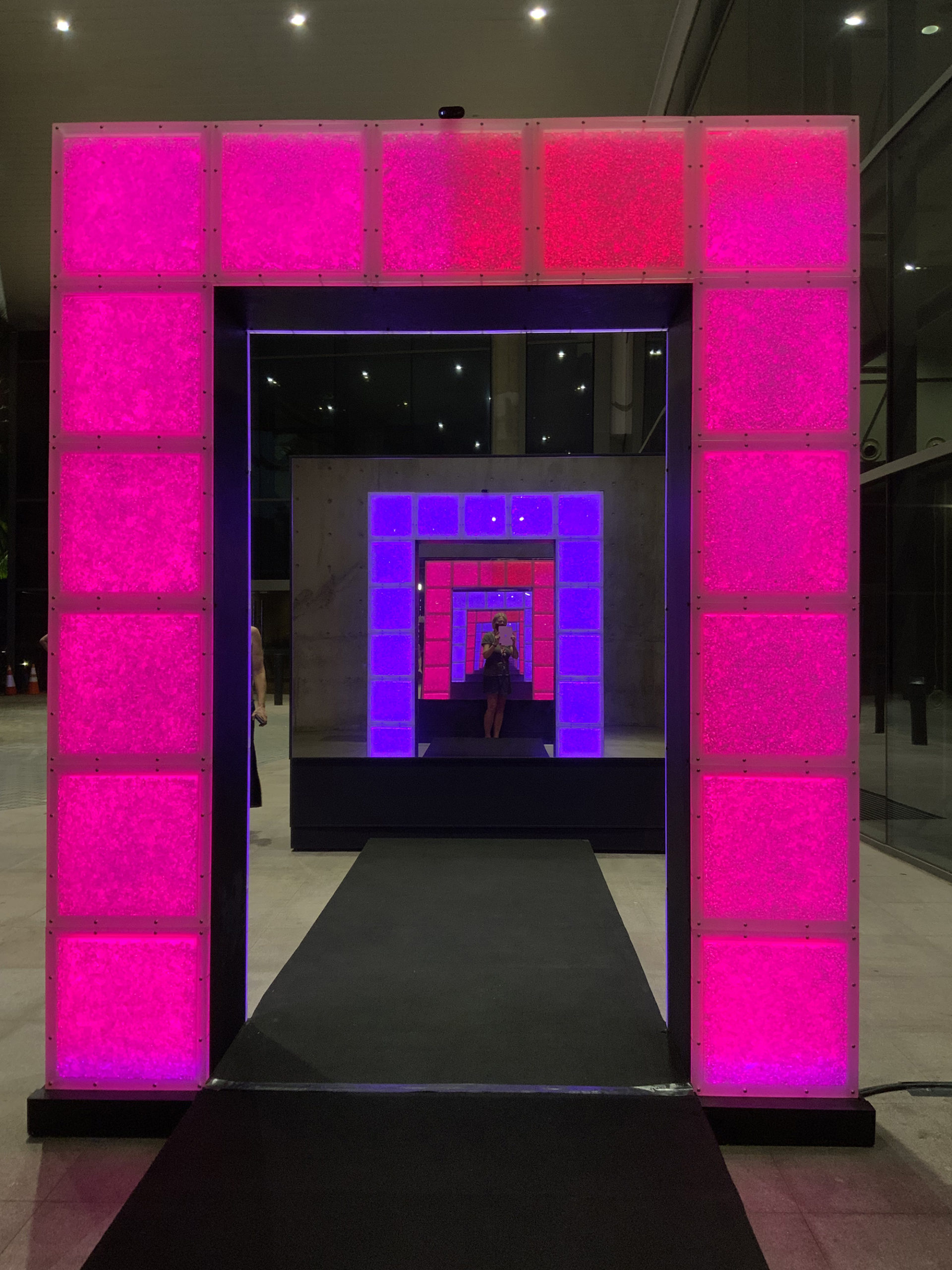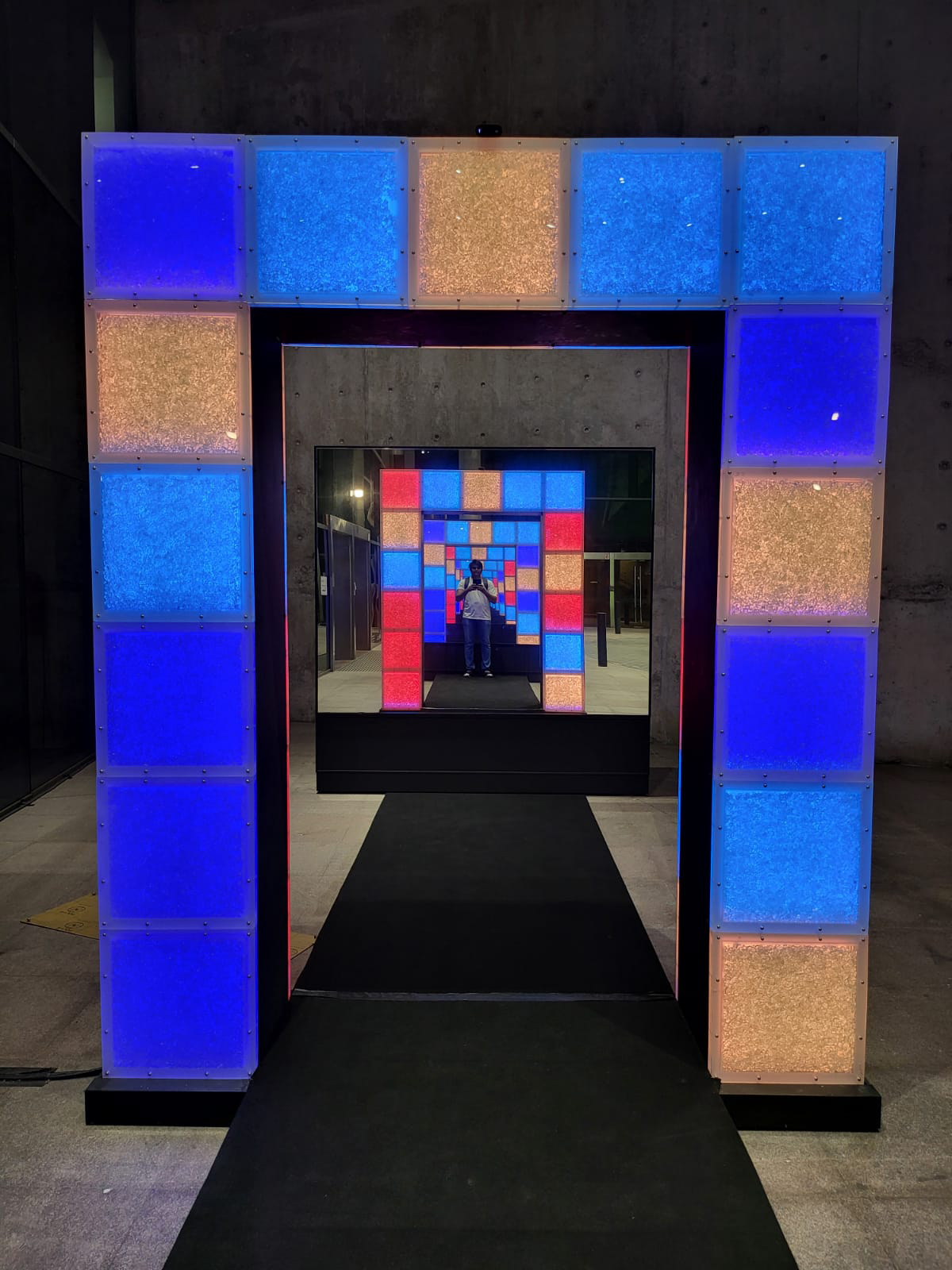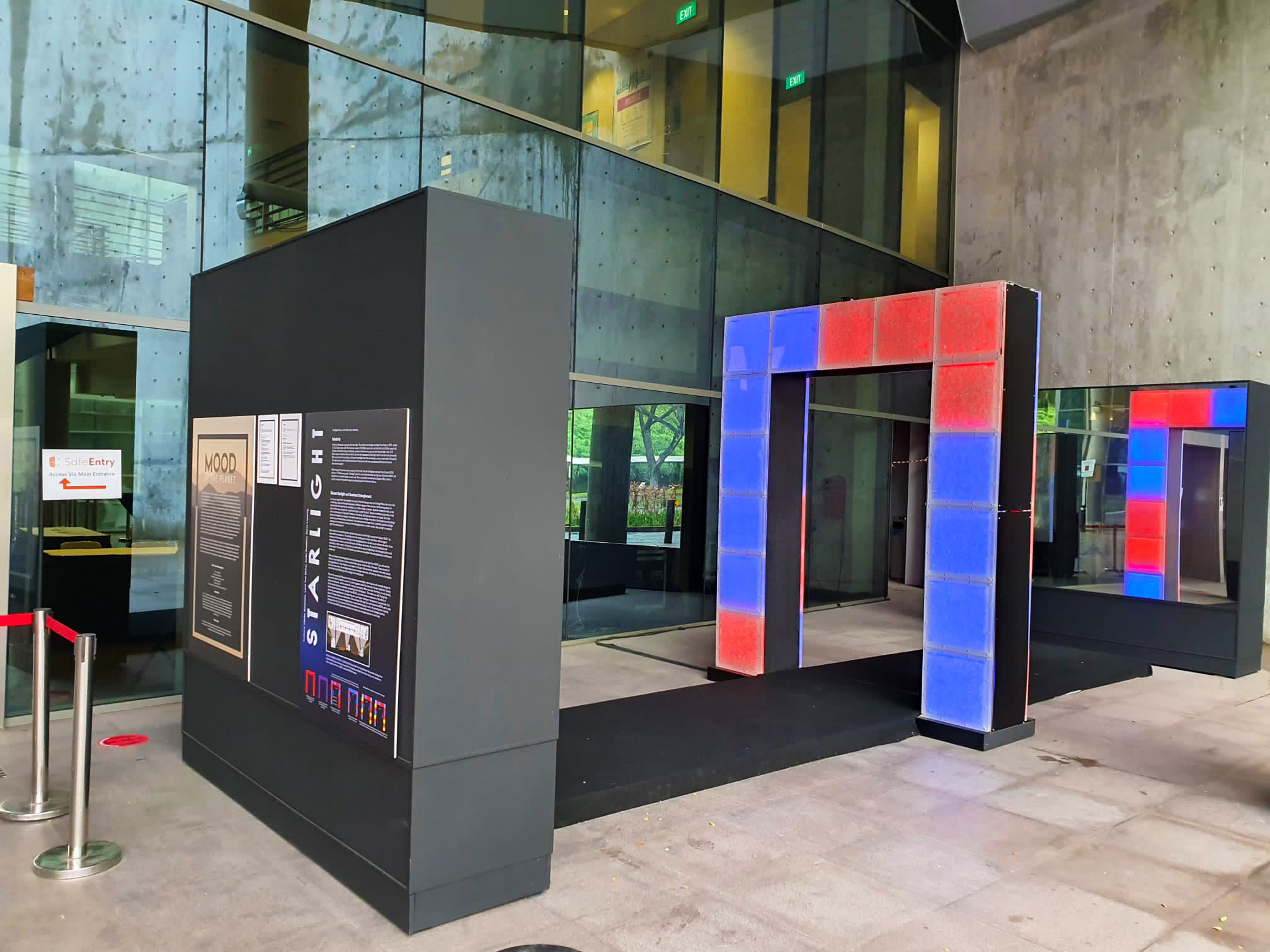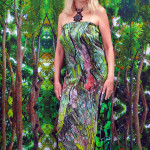Starlight
In 2021, Vibeke Sorensen produced Starlight in collaboration with Nanyang Technological University (NTU) Singapore physicists Prof Lock Yue Chew and Dr. Andri Pradana, as well as Complexity Science Hub (CSH) Vienna / Santa Fe Institute (SFI) complexity scientist Prof John Stephen Lansing. Conceived and designed by Sorensen, Starlight is an interactive installation that visualizes Quantum Entanglement using actual data from the Cosmic Bell Experiment. More than 1.5 million data recordings originating from 2 distant, ancient quasars at opposite sides of the Universe are visualized and displayed on 2 sides of an arch / portal sculpture. The 2 sides of the arch are reflected in 2 walls of mirrors facing each side of the arch, which creates an endless tunnel surrounding the viewer. The data is “entangled” when viewers observe the visualized data by facing the arch, and at this time the actual entangled data is made visible to the viewer. Pure Data (Pd) / GEM Programming is by Vibeke Sorensen, with credit to Mr. Nagaraju Thummanapalli and Miller S. Puckette. Starlight is new content and extended physical installation structure for the arch / portal sculpture that also runs Mood of the Planet, located at the ADM Lobby Entrance at NTU Singapore.
Detailed description:
Because the photons (light) measured come from two different, distant Quasars and are not entangled, the flickering pattern of red and blue light which represents the Quasars’ light is random. But when a viewer faces the portal to see the light coming from one of the Quasars, the viewer becomes an “observer”. At this time, the light from both Quasars become entangled, meaning that the second photon becomes the same colour as the first one. When the viewer stops observing, the entanglement stops and the colours revert to the measured, random changes between blue and red. The installation displays actual, measured random and entangled data recorded by scientists from the two real Quasars separated by billions of light years in our Universe. What actually happened is that when a photon coming from a Quasar on one side of the Universe was observed, it became entangled with a photon from the second Quasar on the other side of the Universe. When you observe the installation, you are navigating the actual data that was recorded by the scientists.
The colours representing the random, un-entangled photons are red and blue. The entangled photons are coloured yellow and cyan (light blue). When you observe the entangled photons by looking directly at the light from the first Quasar, you will see that blocks of green or orange patches often appear, on both sides of the gate, and exactly at the same time. Seen in the mirrors, an infinite line or orange or green is created connecting one side of the installation to the other. These lines represent the entanglement of pairs of photons. Any change to one member of the pair will instantly be repeated in the other photon. But if you look away, the photons are no longer observed, and what you observe is the random flickering of the starlight from the distant two Quasars.Why is this surprising? Because once the photons are entangled, observing one will instantly change the state of the other to match it, even if it is at the opposite end of the Universe. This installation uses the actual data, including the entangled data to provide viewers a way to experience it directly. The data was previously measured and recorded, and it is a playback of the data using interactive media to experience and explore it.
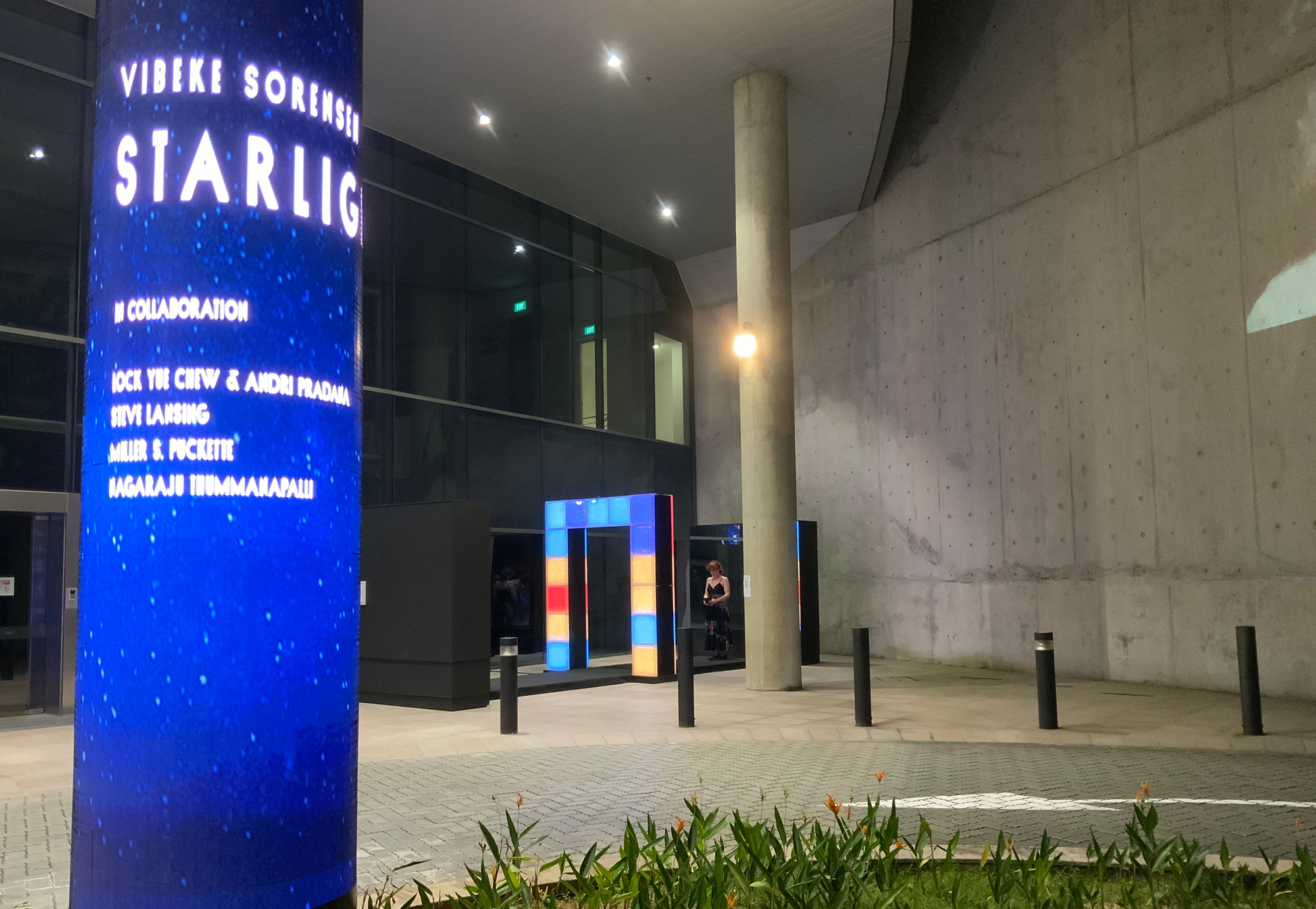
Starlight installation at the entrance to the main lobby of the School of Art, Design and Media (ADM), at Nanyang Technological University Singapore (2021-). Associate Professor Galina Mihaleva is pictured in it. Photograph by Vibeke Sorensen (2021).
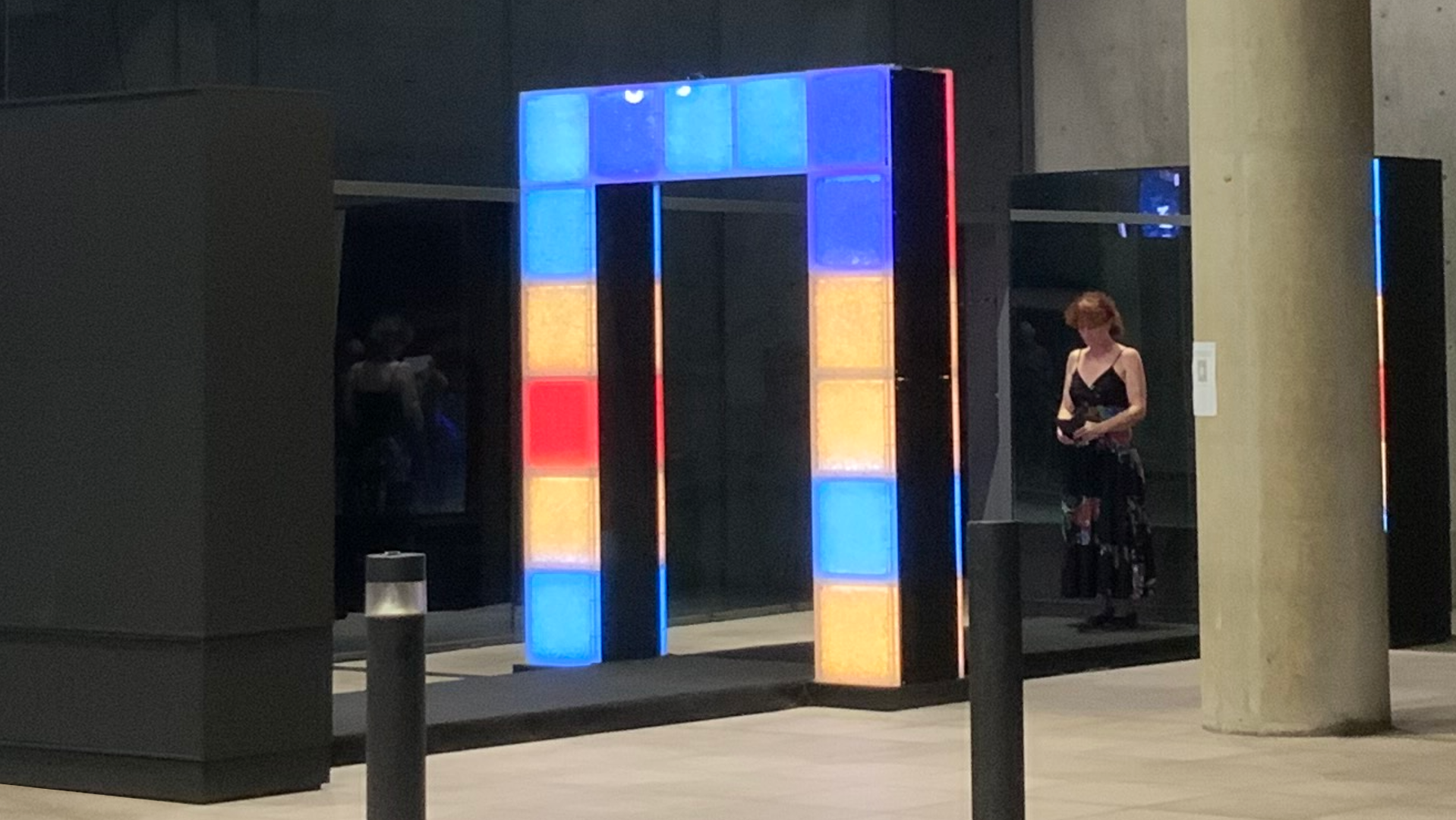
Closeup.
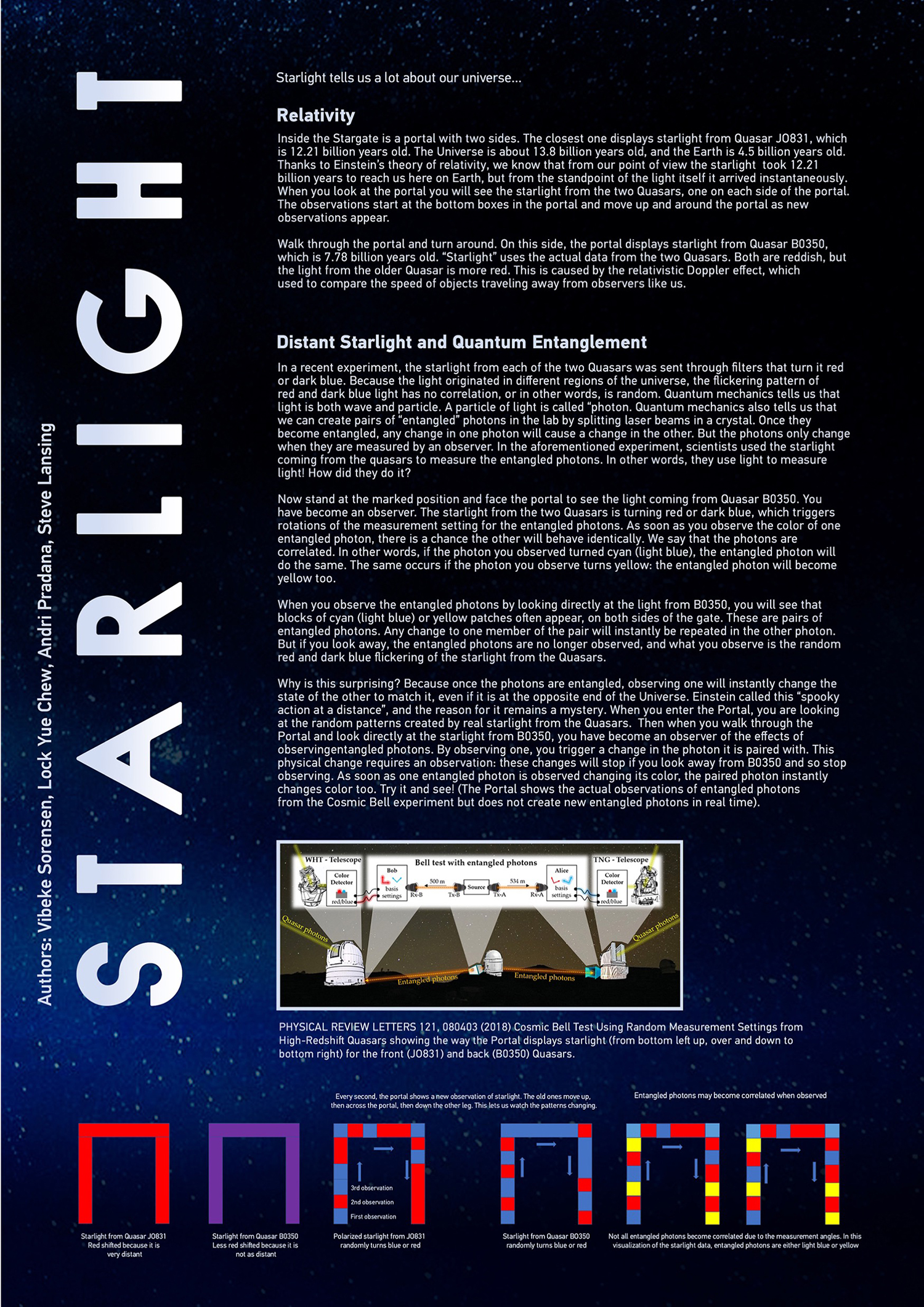
Information posters for Starlight, on the back of one of the two mirror-walls of the installation at the entrance to the School of Art, Design and Media (ADM) at Nanyang Technological University Singapore. Photograph by Nagaraju Thummanapalli (2022).
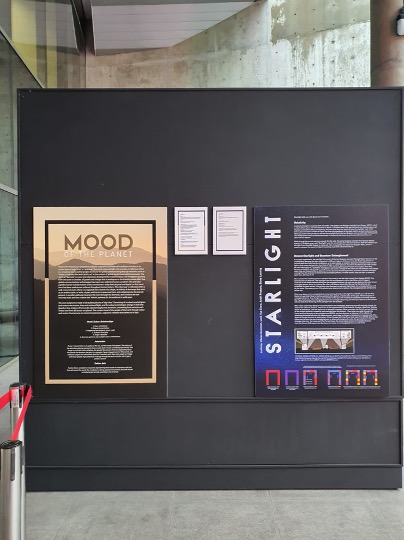
Information posters for Mood of the Planet and Starlight, on the back of one of the two mirror-walls of the installation at the entrance to the School of Art, Design and Media (ADM) at Nanyang Technological University Singapore. Photograph by Nagaraju Thummanapalli (2022).
1. This video is a drone recording of the installation.
2. This is the Pure Data (Pd) programme by Vibeke Sorensen running the Cosmic Bell data reading and mapping to the arch in Starlight. Programme and video by Vibeke Sorensen

